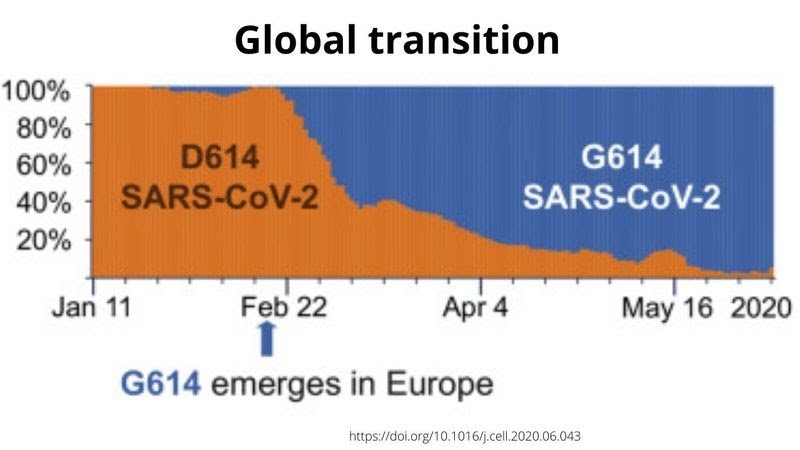Cool  by MaxPlanckSociety
by MaxPlanckSociety 
Electron micrographs of the spike protein of Sars-CoV-2
#AcademicTwitter #AcademicChatter #research #coronavirus #Spike #protein @_atanas_ @grawoig @emulenews
***check also our latest preprint***
https://biorxiv.org/content/10.1101/2020.11.27.400788v1
 by MaxPlanckSociety
by MaxPlanckSociety 
Electron micrographs of the spike protein of Sars-CoV-2
#AcademicTwitter #AcademicChatter #research #coronavirus #Spike #protein @_atanas_ @grawoig @emulenews
***check also our latest preprint***
https://biorxiv.org/content/10.1101/2020.11.27.400788v1
“Like a balloon on a string, the spikes appear to move on the surface of the virus and thus are able to search for the receptor for docking to the target cell,” describes Jacomine Krijnse Locker, group leader at the Paul Ehrlich Institute, the results.
Molecular dynamics of four Spike proteins embedded in a membrane.
The proteins and lipids are shown in surface representation.
Glycans are represented by green van der Waals beads.
Water and ions are omitted for clarity.
simulation time shown: 600ns
The proteins and lipids are shown in surface representation.
Glycans are represented by green van der Waals beads.
Water and ions are omitted for clarity.
simulation time shown: 600ns
Further reading here 
https://www.mpg.de/15269546/sars-cov-2-spike-protein
Spike protein of the new coronavirus is more flexible than expected - New findings on Sars-CoV-2 protein shed light on virus’ ability to infect cells
#coronavirus #SARSCoV2

https://www.mpg.de/15269546/sars-cov-2-spike-protein
Spike protein of the new coronavirus is more flexible than expected - New findings on Sars-CoV-2 protein shed light on virus’ ability to infect cells
#coronavirus #SARSCoV2
Interestingly, #SARSCoV2 variant with Spike G614 has replaced D614 as the dominant pandemic form (indicating that G614 is the “fitter” strain, based on samples from large geographic areas)
More than 70% of SARS-CoV-2 spike genome known to scientists today carry the “G” mutation
More than 70% of SARS-CoV-2 spike genome known to scientists today carry the “G” mutation

 Read on Twitter
Read on Twitter


